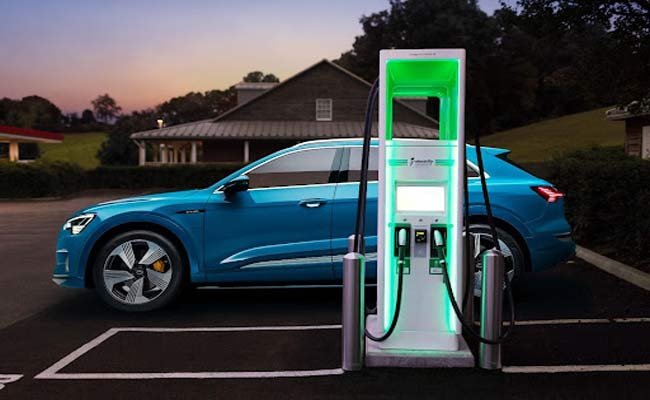
Top 10 Challenges Of Cloud Computing
September 25, 2021
Benefits Of Bottled And Jarred Packaged Goods 2023
March 29, 2022Will All These New Electric Cars Crash The Power Grid? While developments in our daily lives as a result of creative technologies may make our lives easier, they also have an impact on the environment by introducing heat.
 Will all these new electric cars crash the grid due to high temperatures, and increasing demand for electric power for air conditioning, computers, and charging electric automobiles?
Will all these new electric cars crash the grid due to high temperatures, and increasing demand for electric power for air conditioning, computers, and charging electric automobiles?
Each state will face unique problems in responding to the rapid proliferation of electric vehicles. The amount of electricity required if every car on the road converted to electricity was calculated by a team of experts from Quick Fit Autos Dubai.
Will All These New Electric Cars Crash The Power Grid?
In only this year, the scorching temperatures arrived early, prompting the first social media power conservation alert about how the heat would affect electric car users. This generated a debate on social media over whether the area had the financial wherewithal to continue moving toward electric vehicles in the search for a better future.
If we were to talk about regions other than Dubai that is slowly gaining popularity, Cold temperatures, for example, threw parts of Texas under darkness for weeks this winter. This is an oil-and-gas-rich state.
The state’s utilities, on the other hand, were unable to meet demand and had not modernized their infrastructure. The energy board was embarrassed, and many members of the board resigned. Many people’s life has been damaged by a slew of poor judgments.
People in Portland have been instructed not to charge their electric cars, turn off their air conditioning, or disconnect any unused electric equipment. As the country moves to more wind and solar, demand has surged and supply has become unreliable.
Solution
Now that we’ve identified the issue, we need to work on resolving it. Increasing the energy supply is not the solution. The grid must be updated, and even if it is thought to be the best solution, expanding supply capacity will cost trillions of dollars.
If we only look at America, The Energy Marketers of America estimates that upgrading just 10% of the country to electric vehicles will cost $147 billion. Guest, that cost will be passed on to you in Dubai, which is regarded as the world’s most modern city.
What we need to bear in mind is that, at this point, the generating capacity and the load from EV charging are well-matched in terms of location and timing. If they aren’t, the peak demand will cause brownouts and blackouts in some regions,
similar to how A/C loads cause brownouts and blackouts on hot days. However, with intervention in the form of Time of Use (TOU) fees, planned charging station locations, fast charging management,
upgrades in high charging load zones, and new advancements in load buffering with battery systems, smart charging, and V2G (vehicle-to-grid), it is manageable.
Charging Duration
Charging off during peak hours would not only allow for the addition of numerous electric cars on the roads but would also allow power utilities to make more use of power stations currently operating only in limited peak times.
This breakthrough is causing the entire globe to adapt. For example, Seattle City Light is exploring several options for promoting charging during optimal hours. Time-of-day rates are one way.
But how can you make people charge their EVs to charge at an off-peak time, which is usually at night time when the electricity charges are low? Here is the answer from a renowned car workshop in Abu Dhabi!
Simple ‘consumption usage’ electric tariffs have been shown to be effective in shifting 80 to 90% of EV charging to hours of the day when people are sleeping and electricity demand is low. An electric vehicle’s ability to draw power from the grid to recharge is comparable to that of a single-family home.
As A Result
As a result, using price signals to shift this enormous yet flexible demand to off-peak periods when there is lots of spare electric capacity in the system can be an effective way to relieve stress on the grid and your pocketbook.
If we talk about the numbers, Users will pay 31 cents per kilowatt-hour during peak daylight hours and 17 cents during off-peak hours for the Seattle chargers, which were announced last month. The company will track usage at its charging stations to see if the tariffs are effective at moving charging to more convenient hours.
A pilot program to analyze charging habits at home is also being developed by the utility. It’s also collaborating with clients that are focusing on electrifying large fleets to ensure that they have the infrastructure and charging patterns in place to make the transition seamless.
The Targeted Growth
Not only is the gird harmed, but it has also had a significant impact on the growth of automobiles. Electric vehicles’ greater electricity usage is considered a positive to utilities and ratepayers in many places.
Despite rapid population expansion and development, power consumption has been largely stable since 2000. Because of the increased population and building efficiency, the need for power has decreased.
Electric vehicles might help bring electricity use closer to utilities’ capacity for production, which would be helpful not only in terms of growth. This would generate income for the providers, which would go toward covering the expenses of maintaining the capacity and lowering rates for all users.
Summing Up
Judging from all the facts discussed up above and how the government is reacting to it, Laws and regulations are being sought all over the world, in national capitals and state capitols, with the eventual goal of eliminating gas- and diesel-fueled cars and trucks.
These policies are packaged under a variety of names, including infrastructure bills, “zero-emission vehicle mandates,” fuel economy standards, clean car and truck rules, and low carbon fuel standards, but they all have the same central goal of making owning any vehicle that isn’t electric more expensive and requiring the public, rather than private companies, to pay for EV charging.
Let us know how you are managing all of these new rules and regulations employed just because you too own an EV car!



